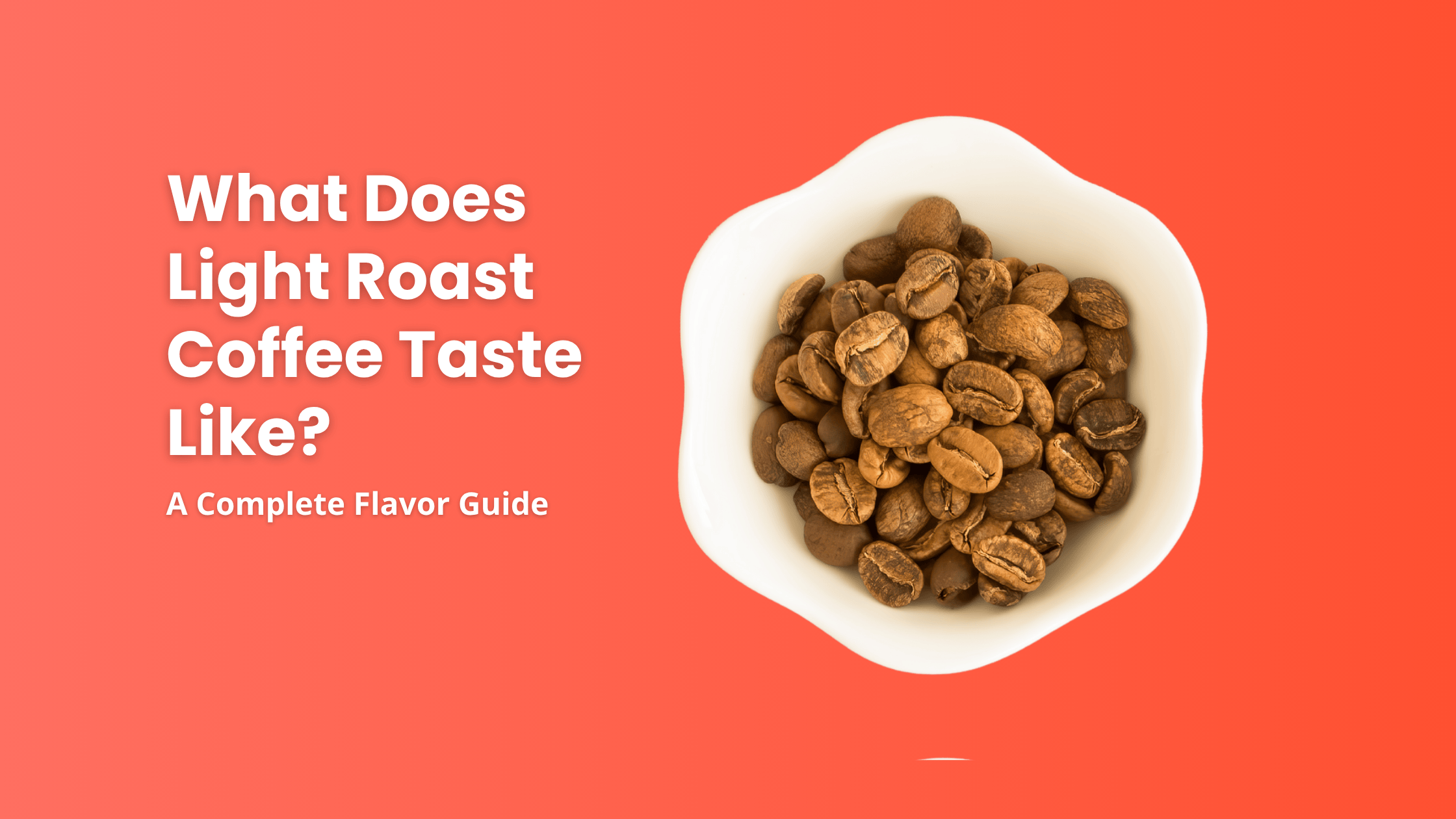
What Does Light Roast Coffee Taste Like? A Flavor Guide
Tired of the same old coffee? Discover the bright, fruity, and floral world of light roast. Our guide explains its unique flavor, what 'acidity' really means, and why this vibrant brew might be your new favorite.
The Purest Expression of Coffee
If you think of coffee like wine, a light roast is the purest expression of the grape—or in this case, the bean. It’s the roast that lets the unique origin shine through the most, telling the story of the soil, altitude, and climate where it was grown.
Unlike darker roasts where the flavor is shaped by the roasting process, the taste of a light roast is all about the bean itself. The result is a bright, nuanced, and lively cup that can be full of surprises. In this guide, we'll explore exactly what light roast coffee tastes like, explain what that "brightness" really means, and show you how to brew it to unlock its amazing flavors.
It's the brightest stop on the coffee spectrum. See how it compares in our complete Coffee Roast Levels Guide.
The Light Roast Flavor Profile: Bright, Fruity & Floral
So, what should you expect in your cup? Forget smoky or chocolatey. The light roast flavor profile is all about vibrancy and complexity. Because the beans are roasted for a shorter time, they retain many of their original characteristics, leading to delicate and often surprising notes.
You can expect to taste things like:
- Bright Citrus: Think lemon zest, juicy orange, or grapefruit.
- Stone Fruit & Berries: Notes of peach, apricot, or even blueberry are common.
- Floral Aromas: Delicate scents of jasmine, rose, or tea are often present.
This brightness is often described as a coffee's "acidity." But don't think of it as sour. In high-quality coffee, acidity refers to a pleasant, tangy sparkle or juiciness that makes the coffee feel lively and crisp on your palate.
📌 Want to share this? Download the PDF or grab the embed code below.
The "First Crack": How Light Roast is Made
The secret to preserving these delicate flavors lies in a very specific moment in the roasting process. As coffee beans heat up, they make a popping sound, much like popcorn. This audible milestone is known as the "first crack."
A light roast is defined by being finished right around this first crack. The beans are dropped from the roaster before the deeper, caramelized sugars have a chance to develop, preserving their bright origin notes and leaving them with a light brown color and a completely dry, non-oily surface.
Light Roast vs. Medium and Dark Roasts
Understanding how light roast stands apart is key to knowing if it's right for you.
- Light vs. Medium Roast: This is a choice between brightness and balance. A light roast prioritizes the bean's vibrant, acidic origin notes. A medium roast mellows that acidity to introduce more body and balanced notes of chocolate and nuts.
- Light vs. Dark Roast: This is a comparison of origin flavor versus roast flavor. A light roast is all about the bean's original character. A dark roast's flavor is almost entirely created by the roasting process itself, resulting in a bold, smoky, and rich cup with very low acidity.
| Roast Level | Primary Flavor | Acidity | Body |
|---|---|---|---|
| Light Roast | Fruity, Floral, Tea-Like | High | Light |
| Medium Roast | Nutty, Chocolatey, Balanced | Medium | Medium |
| Dark Roast | Smoky, Dark Chocolate, Rich | Low | Heavy/Full |
The Caffeine Myth: Is Light Roast Coffee Stronger?
Let's tackle one of the biggest myths in coffee: does light roast have more caffeine? The answer is a classic "it depends on how you measure."
- By the Scoop (Volume): Yes, slightly. Because they are roasted for a shorter time, light roast beans are denser. A scoop of dense light roast beans has more coffee mass—and therefore more caffeine—than a scoop of puffy dark roast beans.
- By the Scale (Weight): No, the caffeine content is virtually identical. As the National Coffee Association explains, caffeine is very stable during roasting, so bean for bean, the caffeine amount stays almost the same regardless of roast level.
The Best Way to Brew Light Roast Coffee
To truly appreciate the delicate, nuanced flavors of a light roast, you need a brewing method that emphasizes clarity and allows those subtle notes to shine.
-
Pour-Over (V60, Chemex): This is the gold standard for light roasts. The paper filter creates a super clean, bright cup that beautifully highlights the complex floral and fruity notes.
- AeroPress: This method is fantastic for its versatility and its ability to produce a bright, clean, and full-flavored cup in just a couple of minutes.
- Siphon: For the true coffee enthusiast, a siphon brewer is an amazing way to experience the incredible aroma and clarity of a specialty light roast.
For detailed steps on any of these methods, check out our complete Brewing Methods Guide.
For the Adventurous Coffee Drinker
Now you know that a light roast is for the coffee drinker who wants to experience the true, unaltered flavor of a coffee's origin. It's a bright, complex, and exciting cup that tells a story about where it came from.
If you love exploring new flavors and enjoy a bright, lively coffee experience, our Happi Bright blend is the perfect introduction.
Ready to taste a world of flavor? Explore our collection of fresh-roasted light roast coffees and discover a whole new side of coffee.
Embed This Infographic on Your Site
Want to share our Coffee Roast Spectrum infographic? Copy the code below and paste it into your website's HTML editor to embed it on your page.
```

0 comments